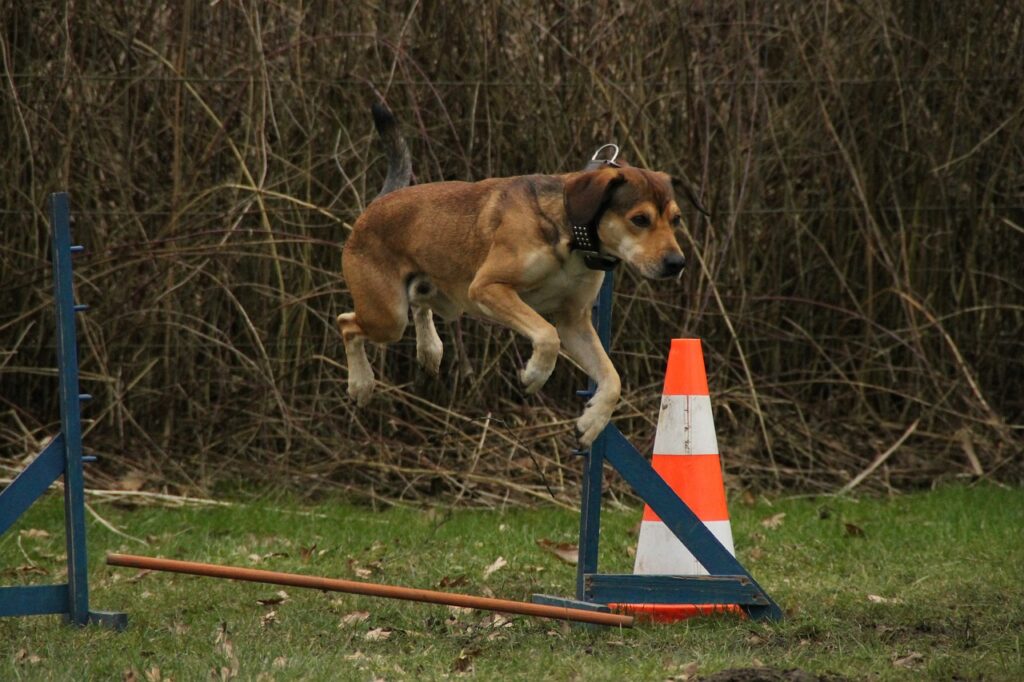Image credit goes to Pixabay
Knowing the age, size, and health condition of your dog will greatly help in determining how much and how frequent exercise they need.
Regular exercise definitely helps the physical and mental health of dogs. While most breeds get by with little more than a quick walk a few times daily, every dog has an individual threshold on how much activity is best.
Dog breeds that are more suited for being cute couch potatoes, such as Spaniels, Setters, and Retrievers, will require more daily activity than sporting types. In order to maintain optimal health, sporting breeds throughout their prime years require a minimum of sixty to ninety minutes of exercise.
Look out for any indications that your dog needs to stop for a nap or end the day in order to prevent harm or overexertion. Puppies need a lot of rest because their bodies are still developing.
How Much Exercise Does a Dog Need?
Limit puppy playtime to five to ten minute sessions, roughly six times each day. Despite being little energetic ballerinas, pups really require less exercise overall than adult dogs and plenty of downtime to recuperate before they can get back to their boisterous antics.
In light of this, if you’re wondering, How long should I walk my puppy?Try to limit the length of your regular walks and switch up the surfaces you walk on—such as sidewalks, grass, and dirt/gravel paths.
Puppy walks should be substantially shorter than those you would give an adult dog since their growing bones and joints may be more susceptible to damage. The enjoyable games you and your dog play together are no different.
Know Your Dog’s Needs
Take into account your dog’s age, breed, and current physical state when you exercise together. An older dog might benefit more from leisurely walks, but a young dog is probably full of energy for anything more strenuous.
No matter how old your dog is, give them some unstructured time for “sniffing.” Sniffing enhances mental well-being via releasing serotonin.
Additionally, watch out for any indications of exhaustion or heat exhaustion. Give your dog some time to unwind if they decide to stop and rest in the middle of fun or if they won’t go any farther on a walk or run. If they don’t appear interested, don’t force them to continue.
Since panting is how dogs cool off instead of perspiring, excessive panting may indicate overheating. Your dog needs to calm down if it is panting forcefully and vigorously or if it refuses to exercise.
Make sure your dog will always have access to plenty of water before taking them on a walk. When out on a run with your dog, stop frequently so they may cool down and have a drink.
Check the temperature as well. If it’s the sweltering summer, think about bringing them outside in the cooler hours of the morning or evening.
Also Read : Dog Pulling on the Leash
Find the Right Activity
Incorporating Your Dog into Your Sport
If you and your dog are into sports, nothing is wrong with taking your dog with you while running, biking, or engaging in some other sport. Of course, one also needs to attend to the progressive increase in the level of difficulty of the activity. In general, avoid activities that could be very tiring and do not force or strain your dog excessively. Observe how he feels about exhaustion.
If your dog seems to have more energy than you, teach them to fetch a ball or flying disc or agility exercises. Chances are good that your dog finds the activity hard enough of a workout, yet just right for you.
Ease Into It
If you haven’t been exercising your dog regularly for some reason, now you want to begin; go slow to start off. Exercise for short periods at low speeds, then increase time, speed, and distance.
Always remember to warm up a little before starting the exercise and cool down at the end of each session while exercising your dog. This can help in keeping your dog safe.
Get your dog’s muscles limber before an exercise, either through a casual 5-to 10-minute walk beforehand and afterwards of a brisk walk, or by asking your veterinarian about helpful stretches you can do with your pet.
We wish you the best of luck in finding the proper dog exercise program. For your dog to have a healthy life, physically and psychologically, he should have regular exercise.

